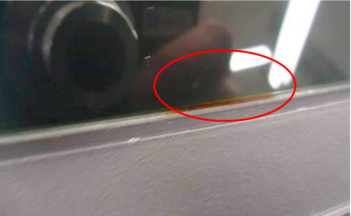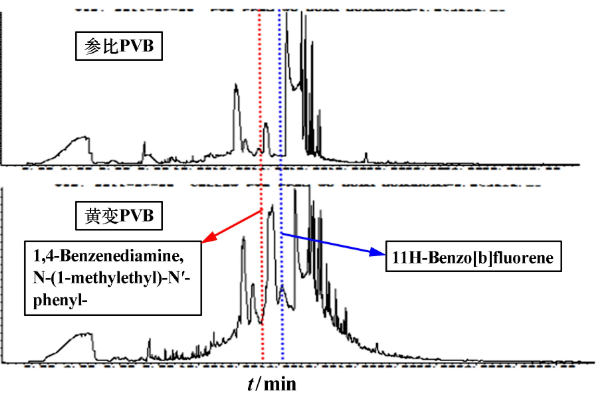Amarelecimento local do PVB/resina de polivinil-butiral O material nas bordas do vidro laminado é um defeito de qualidade raro, porém grave, caracterizado por duas áreas amareladas de aproximadamente 5 cm nas bordas. Com uma taxa de ocorrência de quase 100%, esse defeito tem gerado reclamações de clientes e prejuízos financeiros. Este estudo identifica a causa raiz por meio de auditorias de processo de produção, validação experimental e testes microscópicos, propondo uma solução eficaz.

Análise de Causa
O processo de produção de vidro laminado inclui corte, afiação, laminação, tratamento em autoclave, embalagem, armazenamento e transporte. Investigações no local revelaram que o amarelamento ocorre apenas nos pontos de contato (cerca de 5 cm de largura) com a base da prateleira do produto. Não foi observado amarelamento imediatamente após o tratamento em autoclave, mas ele apareceu após a embalagem e o armazenamento. Em condições de verão com altas temperaturas, os defeitos se formaram mais rapidamente (6 a 24 horas), e tanto o filme plástico quanto a base de borracha nos pontos de contato também amarelaram. As hipóteses iniciais incluíram:
PVB local /pvb-sd-1Envelhecimento devido à alta temperatura: Testes que colocaram o vidro em um suporte recém-mantido (base de borracha aparada e ranhuras mais profundas) não mostraram amarelamento após 24 horas, descartando essa possibilidade.
Envelhecimento de filme plástico contaminando PVB:A substituição do filme por fita adesiva ainda resultou em amarelamento, indicando que o filme não foi a causa direta.
Migração do Amarelecimento do Material de Borracha:Colocar o vidro em um suporte recém-conservado evitou o amarelamento, confirmando que a borracha envelhecida foi o fator principal.
Estudo de Testes e Mecanismos
Espectroscopia de infravermelho com transformada de Fourier (FTIR) e cromatografia gasosa com espectrometria de massas (GC-MS) foram utilizadas para analisar materiais de PVB e borracha amarelados. Os resultados incluíram:
O FTIR não detectou diferenças significativas na composição do PVB ou da borracha.
GC-MS identificou grupos funcionais orgânicos adicionais (por exemplo, benzotiazol, acenaftileno, fluoreno, antraceno) no PVB amarelado, que são aditivos de borracha (por exemplo, aceleradores de vulcanização, antioxidante 4010NA). Essas substâncias migraram para o PVB devido ao fenômeno de "blooming" da borracha EPDM, causando amarelamento localizado. Altas temperaturas e pressão aceleraram a migração, explicando as variações sazonais no tempo de formação dos defeitos.
Soluções de Otimização
Com base na análise, foram propostas três soluções:
Migração de florescimento isolado: Adicione uma barreira inorgânica entre o vidro e a borracha.
Manutenção regular da base de borracha: Apare superfícies envelhecidas periodicamente.
Substituir material de borracha: Use borracha curada com peróxido para minimizar o florescimento.
A fábrica adotou a solução (1), reduzindo a taxa de defeitos de amarelamento para 0%, equilibrando custo e eficácia.
Conclusão
A causa raiz do amarelamento local do PVB foi a migração de aditivos da base de borracha EPDM. A medida de isolamento resolveu o problema de forma eficaz. Este método também pode ser aplicado para controlar defeitos de amarelamento em outros materiais intercalares (por exemplo, EVA), fornecendo uma referência para desafios de processo semelhantes.
Site: www.elephchem.com
Whatsapp: (+)86 13851435272
E-mail: admin@elephchem.com